文章
Miss Chen
2022年03月30日

The flowering quince (Chaenomeles speciosa) is a thorny, multi-stemmed deciduous shrub with a somewhat messy growth habit but beautiful red, orange, white, or pink flowers to go with shiny, dark green foliage. Related to roses, flowering quince has a thorny habit and easy-to-grow nature that makes it a good choice for barrier or border plantings.
The shrub is a dense mound of gray-brown spiny twigs with five-petal flowers about 2 inches in diameter. The flowers last for about 10 to 14 days and are followed by yellowish-green fruits that can be used in preserves and jellies. The oval leaves with serrated edges are a glossy dark green, growing to a maximum of about 3.5 inches. Flowering quince is typically planted in the winter months and watered consistently until the roots are established.
Botanical Name Chaenomeles speciosa
Common Names Flowering quince, Chinese flowering quince
Plant Type Deciduous shrub
Mature Size 6-10 ft. tall, 6-10 ft. wide
Sun Exposure Full
Soil Type Loamy
Soil pH Neutral to acidic
Bloom Time Late winter, early spring
Flower Color White, orange, red, or pink
Hardiness Zones 4 to 9 (USDA)
Native Area Asia
Flowering Quince Care
Most gardeners find flowering quince to be easy to grow and care for. It grows adequately in most soil types other than alkaline clay, and pruning is necessary only if you decide to shape the shrub.
Its dense, thorny growth habit makes flowering quince a good low-maintenance option where a dense, impenetrable hedge, shrub, or border is required. If you don't want the shrub to spread, then make sure to remove suckers at ground level as they appear.

With its thorny habit and relatively short bloom season, flowering quince is not a great specimen plant, but it works well planted in mass along borders or as an informal barrier hedge. In large mixed borders, it can provide an early-spring accent. The fruit from quince shrubs (especially the related C. japonica) can be used in jams and jellies. Flowering quinces are known to be plants that attract hummingbirds.
Light
Grow flowering quince shrubs in full sun. It can grow in partial sun, but the flower display will be better if the plant is exposed to full sunlight.
Soil
Plant flowering quince shrubs in well-drained loam soil for the best flowering display. An overly alkaline soil pH can lead to problems with chlorosis, so keep the soil pH slightly acidic or neutral.1
These plants can be grown in clay and sandy soils but may be less vigorous.
Water
Mulch the base of the shrubs to suppress weeds and retain soil moisture. While these are reasonably drought-tolerant shrubs once established, young plants will need to be watered at times. Water in the morning so excess moisture has time to dry before evening. Sprayed water can cause leaf spots, and leaves may drop if the foliage stays wet.
Temperature and Humidity
Maintaining an even temperature and humidity are crucial for propagating flowering quince via stem cuttings. Temperature also plays a big part in growing this plant from seeds. Once flowering quince is established, though, the plant is quite forgiving of a wide range of temperature and humidity levels. This shrub is quite cold-hardy, tolerating temperatures as low as minus 25 degrees Fahrenheit.
Fertilizer
Feed flowering quince with a slow-release, all-purpose fertilizer in early spring before new growth occurs, or apply compost as a soil amendment. Scatter the fertilizer carefully on the soil around the plant; do not let it touch the foliage, as it can scorch the leaves. Follow with a deep watering to distribute the fertilizer around the roots.
Flowering Quince Varieties
Flowering quince is a member of the rose family as evidenced by its thorny stems and flowers and leaves that resemble those of roses. It is one of the oldest of all landscape plants, having been cultivated for thousands of years in Asia.
In natural environments, the different varieties of the native species grow six to 10 feet high with a similar spread. Several cultivars of flowering quince are commonly sold at garden centers, and there are also hybrid crosses of other Chaenomeles species. These are a few of the smaller-sized varieties:
Chaenomeles x superba 'Jet Trail' grows 3 to 4 feet tall with white flowers.
Chaenomeles speciosa 'Orange Delight' has bright orange double blooms that make for a gorgeous spring display.
Double Take series: 'Scarlet Storm,' 'Orange Storm,' and 'Pink Storm' grow to 5 feet high with double flowers of scarlet, orange, or pink. They are grown in USDA hardiness zones 5 to 8. This series is deer-resistant, but they are not resistant to rabbits.
Propagating Flowering Quince
Propagating flowering quince is done through stem rooting or seeds.

Seeds: In order for seeds to germinate, they must go through stratification or a freeze and thaw cycle. You can mimic the winter cold by putting the seeds in the refrigerator for 60 to 90 days; then remove them, plant in soil, water, and cover with plastic until germination occurs. Transplant seedlings into separate containers once two sets of true leaves develop. Keep the soil moist but not damp. Continue growing the plants until they reach a height of about 12 inches, then transplant.
Cuttings: Cut several stem clippings (about 6 inches long) from the previous year's growth. The diameter of the stems should be that of a pencil. Leave the top leaves intact, but remove the rest of the leaves. Score the bottom section of each stem cutting to reveal the cambium layer beneath the bark. Dip the cutting in a rooting hormone, then embed it in a well-watered, sandy, general-purpose soil. Cover with plastic and set it in a spot with bright light but not direct sun. After a month, check to see if the cutting has rooted by gently tugging the stem. If the stem resists pulling, then it is rooting properly. Wait one more month and then transplant outdoors.
Pruning
Prune just after blooming is over since the bushes bloom on old wood. Pruning should be fairly light, but when done immediately after blooming it will stimulate new growth that makes for more profuse blooming the following spring.
Common Pests/Diseases
Flowering quince is susceptible to fungal leaf spot. Fireblight and scab can sometimes occur. Aphids can badly damage new growth but the damage is not life-threatening. Other insect pests include scale and mites. Chlorosis (yellowing of the foliage) can occur in high pH (alkaline) soils.
The shrub is a dense mound of gray-brown spiny twigs with five-petal flowers about 2 inches in diameter. The flowers last for about 10 to 14 days and are followed by yellowish-green fruits that can be used in preserves and jellies. The oval leaves with serrated edges are a glossy dark green, growing to a maximum of about 3.5 inches. Flowering quince is typically planted in the winter months and watered consistently until the roots are established.
Botanical Name Chaenomeles speciosa
Common Names Flowering quince, Chinese flowering quince
Plant Type Deciduous shrub
Mature Size 6-10 ft. tall, 6-10 ft. wide
Sun Exposure Full
Soil Type Loamy
Soil pH Neutral to acidic
Bloom Time Late winter, early spring
Flower Color White, orange, red, or pink
Hardiness Zones 4 to 9 (USDA)
Native Area Asia
Flowering Quince Care
Most gardeners find flowering quince to be easy to grow and care for. It grows adequately in most soil types other than alkaline clay, and pruning is necessary only if you decide to shape the shrub.
Its dense, thorny growth habit makes flowering quince a good low-maintenance option where a dense, impenetrable hedge, shrub, or border is required. If you don't want the shrub to spread, then make sure to remove suckers at ground level as they appear.

With its thorny habit and relatively short bloom season, flowering quince is not a great specimen plant, but it works well planted in mass along borders or as an informal barrier hedge. In large mixed borders, it can provide an early-spring accent. The fruit from quince shrubs (especially the related C. japonica) can be used in jams and jellies. Flowering quinces are known to be plants that attract hummingbirds.
Light
Grow flowering quince shrubs in full sun. It can grow in partial sun, but the flower display will be better if the plant is exposed to full sunlight.
Soil
Plant flowering quince shrubs in well-drained loam soil for the best flowering display. An overly alkaline soil pH can lead to problems with chlorosis, so keep the soil pH slightly acidic or neutral.1
These plants can be grown in clay and sandy soils but may be less vigorous.
Water
Mulch the base of the shrubs to suppress weeds and retain soil moisture. While these are reasonably drought-tolerant shrubs once established, young plants will need to be watered at times. Water in the morning so excess moisture has time to dry before evening. Sprayed water can cause leaf spots, and leaves may drop if the foliage stays wet.
Temperature and Humidity
Maintaining an even temperature and humidity are crucial for propagating flowering quince via stem cuttings. Temperature also plays a big part in growing this plant from seeds. Once flowering quince is established, though, the plant is quite forgiving of a wide range of temperature and humidity levels. This shrub is quite cold-hardy, tolerating temperatures as low as minus 25 degrees Fahrenheit.
Fertilizer
Feed flowering quince with a slow-release, all-purpose fertilizer in early spring before new growth occurs, or apply compost as a soil amendment. Scatter the fertilizer carefully on the soil around the plant; do not let it touch the foliage, as it can scorch the leaves. Follow with a deep watering to distribute the fertilizer around the roots.
Flowering Quince Varieties
Flowering quince is a member of the rose family as evidenced by its thorny stems and flowers and leaves that resemble those of roses. It is one of the oldest of all landscape plants, having been cultivated for thousands of years in Asia.
In natural environments, the different varieties of the native species grow six to 10 feet high with a similar spread. Several cultivars of flowering quince are commonly sold at garden centers, and there are also hybrid crosses of other Chaenomeles species. These are a few of the smaller-sized varieties:
Chaenomeles x superba 'Jet Trail' grows 3 to 4 feet tall with white flowers.
Chaenomeles speciosa 'Orange Delight' has bright orange double blooms that make for a gorgeous spring display.
Double Take series: 'Scarlet Storm,' 'Orange Storm,' and 'Pink Storm' grow to 5 feet high with double flowers of scarlet, orange, or pink. They are grown in USDA hardiness zones 5 to 8. This series is deer-resistant, but they are not resistant to rabbits.
Propagating Flowering Quince
Propagating flowering quince is done through stem rooting or seeds.

Seeds: In order for seeds to germinate, they must go through stratification or a freeze and thaw cycle. You can mimic the winter cold by putting the seeds in the refrigerator for 60 to 90 days; then remove them, plant in soil, water, and cover with plastic until germination occurs. Transplant seedlings into separate containers once two sets of true leaves develop. Keep the soil moist but not damp. Continue growing the plants until they reach a height of about 12 inches, then transplant.
Cuttings: Cut several stem clippings (about 6 inches long) from the previous year's growth. The diameter of the stems should be that of a pencil. Leave the top leaves intact, but remove the rest of the leaves. Score the bottom section of each stem cutting to reveal the cambium layer beneath the bark. Dip the cutting in a rooting hormone, then embed it in a well-watered, sandy, general-purpose soil. Cover with plastic and set it in a spot with bright light but not direct sun. After a month, check to see if the cutting has rooted by gently tugging the stem. If the stem resists pulling, then it is rooting properly. Wait one more month and then transplant outdoors.
Pruning
Prune just after blooming is over since the bushes bloom on old wood. Pruning should be fairly light, but when done immediately after blooming it will stimulate new growth that makes for more profuse blooming the following spring.
Common Pests/Diseases
Flowering quince is susceptible to fungal leaf spot. Fireblight and scab can sometimes occur. Aphids can badly damage new growth but the damage is not life-threatening. Other insect pests include scale and mites. Chlorosis (yellowing of the foliage) can occur in high pH (alkaline) soils.
0
0
文章
A🎌王木木💮
2019年11月11日

Today is November eleventh--Singles Day .Singles Day is a shopping festival in China.If you’re going to confess on Singles Day,the first choice for sending flowers must be roses,but we’re not talking about roses today.Today we talk about the lucky flowers of November 11th--Camellia.
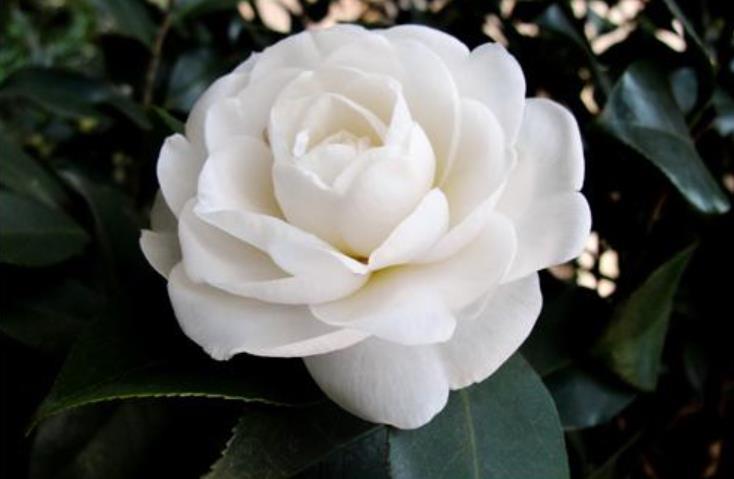
Other common names:camellia 'Quintessence'
Family:Theaceae
Genus:Camellia are evergreen shrubs with simple, ovate, glossy, leathery leaves and showy flowers with solitary or clustered flowers early in the year
Details:Quintessence' is a compact, spreading, evergreen shrub to around 1m tall with glossy, oval, dark green leaves. Musk-scented, small, white, semi-double flowers flushed with pink are borne from late winter to early spring
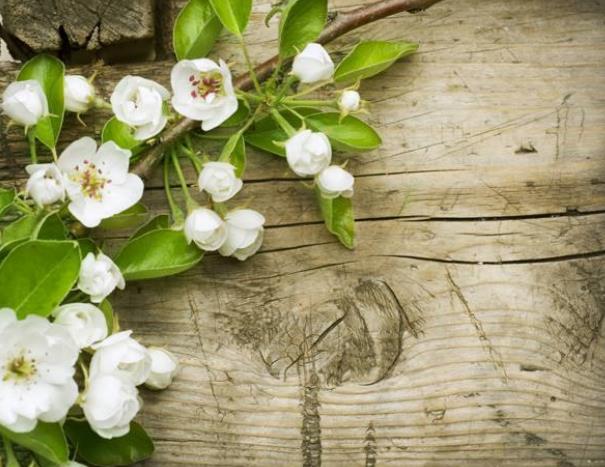
How to grow
Cultivation Suitable for woodland and acidic soils. Position in a site sheltered from cold, dry winds and early morning sun as buds and flowers may be damaged by cold winds and late frosts see camellia cultivation
Propagation Propagate by semi-hardwood cuttings
Suggested planting locations and garden types Flower borders and beds Ground Cover Low Maintenance City & Courtyard Gardens Cottage & Informal Garden Patio & Container Plants
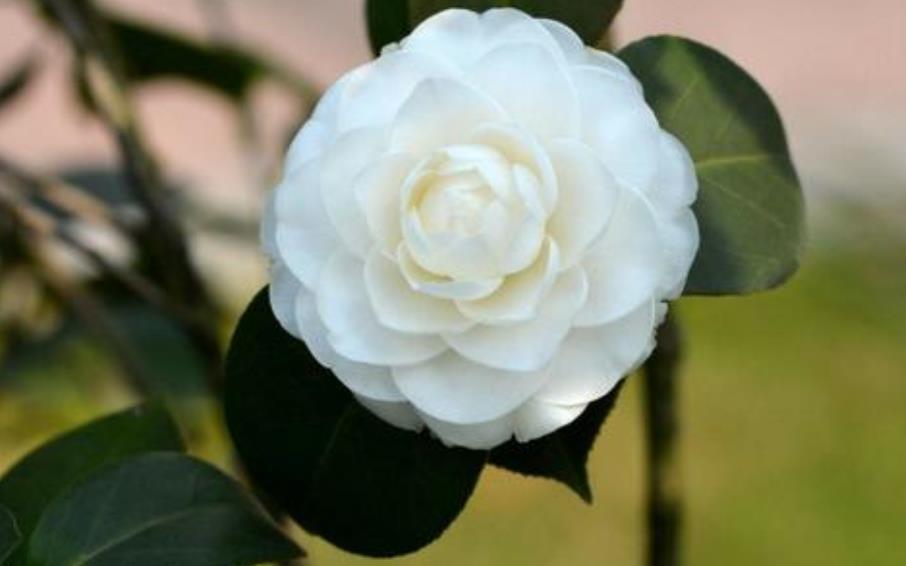
How to care
PruningPruning group 8
Pests May be attacked by aphids, scale insects and vine weevil
Diseases May be affected by honey fungus, phytophthora root rot, camellia gall, camellia leaf blight, camellia yellow mottle virus and flowers may be infected by camellia petal blight

Other common names:camellia 'Quintessence'
Family:Theaceae
Genus:Camellia are evergreen shrubs with simple, ovate, glossy, leathery leaves and showy flowers with solitary or clustered flowers early in the year
Details:Quintessence' is a compact, spreading, evergreen shrub to around 1m tall with glossy, oval, dark green leaves. Musk-scented, small, white, semi-double flowers flushed with pink are borne from late winter to early spring

How to grow
Cultivation Suitable for woodland and acidic soils. Position in a site sheltered from cold, dry winds and early morning sun as buds and flowers may be damaged by cold winds and late frosts see camellia cultivation
Propagation Propagate by semi-hardwood cuttings
Suggested planting locations and garden types Flower borders and beds Ground Cover Low Maintenance City & Courtyard Gardens Cottage & Informal Garden Patio & Container Plants

How to care
PruningPruning group 8
Pests May be attacked by aphids, scale insects and vine weevil
Diseases May be affected by honey fungus, phytophthora root rot, camellia gall, camellia leaf blight, camellia yellow mottle virus and flowers may be infected by camellia petal blight
1
0
成长记
Mistey82
2019年01月14日

I now added "Flamingo Kolorscape korhopiko pp23529 Pink Roses" in my "garden"
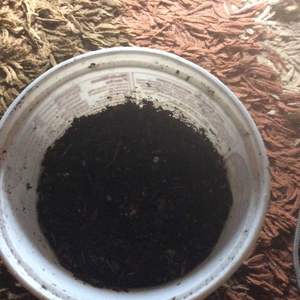

0
0
文章
Miss Chen
2018年08月14日

Flowering perennial plants have a life cycle of two years or more. They require less maintenance than annual flowers and they include regional native flowering plants. Familiar flowering perennials include hollyhock, roses, Shasta daisies, carnations, iris, coreopsis, azaleas, hydrangeas and peonies. Native perennials such as Ceanothus, salvia, abutilon, yarrow, columbine and pawpaw, thrive in the natural climate and soil conditions of their native regions and do not require additional soil amendments.

Yarrow
Common yarrow, also known as milfoil, is native to the entire United States. It is a member of the aster family of flowers and has many hybridized variations. Yarrow grows 3 feet in height, has lacy gray-green leaves and white or pink flat-topped clusters of flowers. This native flowering perennial adapts easily to a home garden where it spreads through seed from its mature flowers. It has fragrant foliage and has been traditionally used as a medicinal tea for stomach ailments. Yarrow blooms April to July in the south and west and from mid-July through September in the north.
Butterfly Weed
Butterfly weed, butterfly milkweed, orange milkweed and pleurisy root are the common names for this showy, abundant-blooming native perennial. Its bright yellow-orange flower clusters are 2 to 5 inches across and bloom from May to September. Its sturdy blooms are good cut flowers and are grown with other mid-size flowering perennials. It has a high drought tolerance, very low water usage and prefers sandy, well-draining soil. Indigenous people used the root of this plant as a cure for bronchitis and other lung ailments. Regional native plant nurseries provide seeds and started butterfly weed plants.
Great Blue Lobelia
Showy lavender blue tubular flowers grow on the stems of the native Great Blue Lobelia. This native plant flowering perennial thrives in moist garden conditions in sun or shade, in clay or sandy soil. It blooms July to September. It is commercially available through native plant nurseries, propagated by divided root clumps or seed. Seeds sprout easily on a slightly scratched soil surface. Great Blue Lobelia attracts birds and butterflies to the garden.

Desert Marigold
This flowering short-lived perennial is native to the drier regions of the southwestern United States. Seeds are commercially available from online native plant resources. It is easily grown in home gardens where it provides yellow daisy-like flowers that bloom continuously from early spring to fall on a 12 to 18 inch mound. Its leaves are woolly and grayish, with one bloom at the end of each slender, leafless flower stalk. The desert marigold thrives in dry soil, part shade and extreme heat. It has very low water requirements and it attracts bees and butterflies.

Yarrow
Common yarrow, also known as milfoil, is native to the entire United States. It is a member of the aster family of flowers and has many hybridized variations. Yarrow grows 3 feet in height, has lacy gray-green leaves and white or pink flat-topped clusters of flowers. This native flowering perennial adapts easily to a home garden where it spreads through seed from its mature flowers. It has fragrant foliage and has been traditionally used as a medicinal tea for stomach ailments. Yarrow blooms April to July in the south and west and from mid-July through September in the north.
Butterfly Weed
Butterfly weed, butterfly milkweed, orange milkweed and pleurisy root are the common names for this showy, abundant-blooming native perennial. Its bright yellow-orange flower clusters are 2 to 5 inches across and bloom from May to September. Its sturdy blooms are good cut flowers and are grown with other mid-size flowering perennials. It has a high drought tolerance, very low water usage and prefers sandy, well-draining soil. Indigenous people used the root of this plant as a cure for bronchitis and other lung ailments. Regional native plant nurseries provide seeds and started butterfly weed plants.
Great Blue Lobelia
Showy lavender blue tubular flowers grow on the stems of the native Great Blue Lobelia. This native plant flowering perennial thrives in moist garden conditions in sun or shade, in clay or sandy soil. It blooms July to September. It is commercially available through native plant nurseries, propagated by divided root clumps or seed. Seeds sprout easily on a slightly scratched soil surface. Great Blue Lobelia attracts birds and butterflies to the garden.

Desert Marigold
This flowering short-lived perennial is native to the drier regions of the southwestern United States. Seeds are commercially available from online native plant resources. It is easily grown in home gardens where it provides yellow daisy-like flowers that bloom continuously from early spring to fall on a 12 to 18 inch mound. Its leaves are woolly and grayish, with one bloom at the end of each slender, leafless flower stalk. The desert marigold thrives in dry soil, part shade and extreme heat. It has very low water requirements and it attracts bees and butterflies.
0
0
文章
Miss Chen
2017年09月29日

The tulip is the world's most favorite flower behind only roses and chrysanthemums, according to Onlyflowers.org. Similar to the top two blooms, tulips can convey many unspoken messages about life, love and relationships, depending on their color and arrangement.

History
Native to Eurasia, tulips were brought to western Europe in 1562 and named "tulipa," the Latin word for turban. Demand for these flowers soon soared, especially in the Netherlands during the 17th century. Historians have dubbed this period "Tulip Mania."
Considerations
Just as roses are associated with romantic love, tulips carry the overall meaning of perfect love.
Significance
Forgiveness and worth, however, are exclusive to the white tulip, according to the Pro Flowers website. This color is also ideal for funerals and memorials.

Musical Ties
The contemporary Christian band Larue borrowed this flower's name for their 2001 song "One White Tulip."
National Flower
According to The Flower Expert website, the tulip -- including the white variety -- is the national symbol of four countries: Hungary, Kyrgyzstan, the Netherlands and Turkey.

History
Native to Eurasia, tulips were brought to western Europe in 1562 and named "tulipa," the Latin word for turban. Demand for these flowers soon soared, especially in the Netherlands during the 17th century. Historians have dubbed this period "Tulip Mania."
Considerations
Just as roses are associated with romantic love, tulips carry the overall meaning of perfect love.
Significance
Forgiveness and worth, however, are exclusive to the white tulip, according to the Pro Flowers website. This color is also ideal for funerals and memorials.

Musical Ties
The contemporary Christian band Larue borrowed this flower's name for their 2001 song "One White Tulip."
National Flower
According to The Flower Expert website, the tulip -- including the white variety -- is the national symbol of four countries: Hungary, Kyrgyzstan, the Netherlands and Turkey.
0
0
文章
Dummer. ゛☀
2017年09月27日

There’s nothing more enchanting than the iconic “rose-covered cottage”. The imagery of quaint, thatched-roof homes covered with long, sweet-smelling trails of colorful roses. Climbing roses can form a vibrant landscape backdrop for border perennials and annuals. They are also a lovely choice for arbors, trellises, fences, and pergolas. Most varieties will grow from 6 to 12 feet (1.8 to 3.2 m) long and will spread about 3 to 4 feet (0.9 to 1.2 m) wide. They are available in a range of pastels, brights, and multi-colors.
Climbers are considerably less fussy than their bush-form rose cousins; you simply need to have a handle on the basics and a little help from Mother Nature.
Choosing a Variety
Above all, determine whether the variety you want is suited for your growing zone – if you’re not already familiar with the importance of growing things suited to your hardiness zone. Next, choose the color you like and see if the mature size is suited for the space you’ve chosen. Then, look for a climber that is disease-resistant, repeat-blooming, or whichever other “bonus” features are most important to you.
Growing Conditions
Most all rose types need full sun; they thrive in loamy, well-drained soil and prefer a consistent drink of water: about an inch (2.5 cm) a week. Eastern exposure is ideal to protect the leaves from hot afternoon sun.
Note: Roses with wet feet are susceptible to all kinds of fungus. Black spot and other diseases can spread to your other rose plantings, so keep a clean planting site and take care not to overwater. Good soil drainage will help mitigate heavy soaking rains.
Training
Gardeners usually want a climbing rose to serve a functional purpose (act as a screen, frame a doorway, etc.) as well as provide visual beauty to the space. To that end, the stems need to be trained to grow the way you want them to. Air circulation is important to prevent disease, so if you want the climber to cover a wall, use a free-standing vertical support that gives your rose at least 3 inches (7.5 cm) of breathing room between the plant and the wall. With a stretchable fastener, hand-tie your climber to the crosspiece of the structure and try to arrange the branches in a fan shape as it grows. This will help to make pruning easier. It’s recommended that you train — do not try to heavily prune — for the first couple of years. This will encourage growth on the bottom of the plant, not just the tops, for a fuller appearance.
Pruning
Aside from sun, food, and water essentials, one thing you can do to turn your climbing roses into prolific bloomers is proper pruning. Pruning is only necessary once a year after the plants have been established. Many gardeners prune their climbing roses, for maintenance and shape, in the spring after the first blooms pass. As a result of proper pruning, your climbers will be significantly stronger and will produce many more blooms!
Note: Most climbing roses (hybrid teas) bloom two or more times every season: first on old canes, and then on the current season’s growth. If you prune in late winter (about the time forsythia blooms), you’ll get boatloads of blooms later in the season. For old-fashioned climbers that only bloom once in the summer, prune just after blooming has stopped.
When it’s time to prune, remove any dead, diseased, damaged, or crossing canes, and canes that are narrower than a pencil. When all you’ve got is main canes left, cut back the side shoots from these main canes to about 2 to 3 inches (5 to 7.5 cm) to keep them in line.
Tip: Wipe your pruning tools with rubbing alcohol between each cut. This helps prevent the spread of disease when pruning, while also caring for your tools. After use, wash pruning tools with a mild soap, rinse, and towel-dry.
As always, deadhead your climbers to keep them blooming, but just until fall — allowing hips to develop helps the plant enter dormancy, which will help it overwinter properly.
Feeding
Fertilizer requirements differ, depending upon where you live and your individual soil composition. In the South or West, where roses tend to grow for 9 or 10 months of the year, more fertilizer may be needed. In contrast: in the North, where roses may have 3 or 4 months of growth, less fertilizer will be used.
Time-release rose food is the easiest form to use; all you have to remember is to apply it once or twice per season, and water before and after use to avoid burning.
Organic gardeners like a 50/50 mix of cottonseed and alfalfa meals. Use 10 cups of this mixture at the base of each rose every 10 weeks, and cover with mulch.
Start fertilizing in early spring after pruning, about four weeks before spring growth begins. In cold-winter regions, stop fertilizing six weeks before the first predicted frost to allow the plant to go dormant before a hard freeze.
Mulching and Winterizing
Mulch is critical to keep rose roots evenly moist in the summer, and to protect them against hard freezing over the winter. Apply a layer of mulch, only a few inches thick, around roses in the spring – this may happen at planting time if you plant roses in the spring. Later in the fall, after the first frost, pile up more mulch around the plants to provide extra insulation. As the ground warms and thaws in the spring, gradually remove the excess mulch and leave a layer of mulch that is just a few inches thick again.
Pest Control
Roses seem to attract more insects than any other flower – beneficials and pests alike! Pests may chew and pit the leaves, wilt the petals, and burrow into the stems. You can nip pest problems in the bud with organic Insecticidal Soap — it acts quickly and on contact (not systemically) to get rid of common rose pests like aphids, scale, and whiteflies, with an all-natural solution.
Note: Pesticides don’t know the difference between beneficials and pests, so never use pesticides when bees or other beneficials are present.
Disease Control
Roses are subject to black spot, anthracnose, and other fungal problems caused by a recipe of too much water, humidity, and heat. Some varieties are more disease-resistant. If your climbing roses do develop a fungal disease, a disease control spray like Bonide, Fung-onil, Multi-Purpose Fungicide should be used. For a natural alternative in organic gardens, copper-based Bordeaux spray/dust is effective against mildews and other diseases.
Climbing roses are a unique twist to the traditional landscape – and since they take up very little ground space, you can enjoy growing your own climbers even if your space is limited. Now that you have the basics down, you’re ready to get started growing your own climbing roses!

Climbers are considerably less fussy than their bush-form rose cousins; you simply need to have a handle on the basics and a little help from Mother Nature.
Choosing a Variety
Above all, determine whether the variety you want is suited for your growing zone – if you’re not already familiar with the importance of growing things suited to your hardiness zone. Next, choose the color you like and see if the mature size is suited for the space you’ve chosen. Then, look for a climber that is disease-resistant, repeat-blooming, or whichever other “bonus” features are most important to you.

Growing Conditions
Most all rose types need full sun; they thrive in loamy, well-drained soil and prefer a consistent drink of water: about an inch (2.5 cm) a week. Eastern exposure is ideal to protect the leaves from hot afternoon sun.
Note: Roses with wet feet are susceptible to all kinds of fungus. Black spot and other diseases can spread to your other rose plantings, so keep a clean planting site and take care not to overwater. Good soil drainage will help mitigate heavy soaking rains.

Training
Gardeners usually want a climbing rose to serve a functional purpose (act as a screen, frame a doorway, etc.) as well as provide visual beauty to the space. To that end, the stems need to be trained to grow the way you want them to. Air circulation is important to prevent disease, so if you want the climber to cover a wall, use a free-standing vertical support that gives your rose at least 3 inches (7.5 cm) of breathing room between the plant and the wall. With a stretchable fastener, hand-tie your climber to the crosspiece of the structure and try to arrange the branches in a fan shape as it grows. This will help to make pruning easier. It’s recommended that you train — do not try to heavily prune — for the first couple of years. This will encourage growth on the bottom of the plant, not just the tops, for a fuller appearance.

Pruning
Aside from sun, food, and water essentials, one thing you can do to turn your climbing roses into prolific bloomers is proper pruning. Pruning is only necessary once a year after the plants have been established. Many gardeners prune their climbing roses, for maintenance and shape, in the spring after the first blooms pass. As a result of proper pruning, your climbers will be significantly stronger and will produce many more blooms!
Note: Most climbing roses (hybrid teas) bloom two or more times every season: first on old canes, and then on the current season’s growth. If you prune in late winter (about the time forsythia blooms), you’ll get boatloads of blooms later in the season. For old-fashioned climbers that only bloom once in the summer, prune just after blooming has stopped.

When it’s time to prune, remove any dead, diseased, damaged, or crossing canes, and canes that are narrower than a pencil. When all you’ve got is main canes left, cut back the side shoots from these main canes to about 2 to 3 inches (5 to 7.5 cm) to keep them in line.
Tip: Wipe your pruning tools with rubbing alcohol between each cut. This helps prevent the spread of disease when pruning, while also caring for your tools. After use, wash pruning tools with a mild soap, rinse, and towel-dry.
As always, deadhead your climbers to keep them blooming, but just until fall — allowing hips to develop helps the plant enter dormancy, which will help it overwinter properly.

Feeding
Fertilizer requirements differ, depending upon where you live and your individual soil composition. In the South or West, where roses tend to grow for 9 or 10 months of the year, more fertilizer may be needed. In contrast: in the North, where roses may have 3 or 4 months of growth, less fertilizer will be used.
Time-release rose food is the easiest form to use; all you have to remember is to apply it once or twice per season, and water before and after use to avoid burning.
Organic gardeners like a 50/50 mix of cottonseed and alfalfa meals. Use 10 cups of this mixture at the base of each rose every 10 weeks, and cover with mulch.

Start fertilizing in early spring after pruning, about four weeks before spring growth begins. In cold-winter regions, stop fertilizing six weeks before the first predicted frost to allow the plant to go dormant before a hard freeze.
Mulching and Winterizing
Mulch is critical to keep rose roots evenly moist in the summer, and to protect them against hard freezing over the winter. Apply a layer of mulch, only a few inches thick, around roses in the spring – this may happen at planting time if you plant roses in the spring. Later in the fall, after the first frost, pile up more mulch around the plants to provide extra insulation. As the ground warms and thaws in the spring, gradually remove the excess mulch and leave a layer of mulch that is just a few inches thick again.

Pest Control
Roses seem to attract more insects than any other flower – beneficials and pests alike! Pests may chew and pit the leaves, wilt the petals, and burrow into the stems. You can nip pest problems in the bud with organic Insecticidal Soap — it acts quickly and on contact (not systemically) to get rid of common rose pests like aphids, scale, and whiteflies, with an all-natural solution.
Note: Pesticides don’t know the difference between beneficials and pests, so never use pesticides when bees or other beneficials are present.

Disease Control
Roses are subject to black spot, anthracnose, and other fungal problems caused by a recipe of too much water, humidity, and heat. Some varieties are more disease-resistant. If your climbing roses do develop a fungal disease, a disease control spray like Bonide, Fung-onil, Multi-Purpose Fungicide should be used. For a natural alternative in organic gardens, copper-based Bordeaux spray/dust is effective against mildews and other diseases.

Climbing roses are a unique twist to the traditional landscape – and since they take up very little ground space, you can enjoy growing your own climbers even if your space is limited. Now that you have the basics down, you’re ready to get started growing your own climbing roses!
0
0
文章
Dummer. ゛☀
2017年09月27日

Roses (genus Rosa) are some of the most popular and beautiful flowering shrubs grown, but starting a rose garden may seem daunting to new gardeners. However, growing roses for beginners doesn’t have to be a stressful endeavor. In fact, with proper planting and care, nearly anyone can become a successful rose gardener.
Growing Conditions
When growing roses, it’s important to choose a site receiving at least 6 hours of sun each day. Rose bushes must also be located in well-drained, fertile soil. Plant dormant roses in early spring (or fall). Potted plants can be planted any time between spring and fall, but preferably spring.
If you’re planting bare root roses, presoak them in water for at least 24 hours prior to placing them in the ground.
Both bare root and potted rose bushes need to be planted about 2 feet (60 cm) deep, with the hole large enough to accommodate the roots. Backfill the hole with soil, adding some well-rotted manure in with it and water thoroughly. Then mound up additional soil around the base of the plant. Note that this is not necessary for actively growing roses.
General Care
Caring for rose bushes is important to their overall health and vigor, especially when it comes to watering. Roses require at least an inch (2.5 cm) of water weekly throughout their growing season, beginning in spring or following spring planting. While overhead watering is suitable before the onset of new growth, it is often better to water these plants at the soil line using soaker hoses or similar means. Rose bushes are very susceptible to fungal diseases, such as black spot and powdery mildew, especially when their foliage is kept too wet.
Fertilizer for roses should also be applied in spring, following the label instructions carefully. However, with the addition of well-rotted manure each spring, this is usually adequate. Mulching your rose bush will help retain moisture and may also offer some winter protection.
Pruning is another aspect to consider when caring for rose bushes. This often takes place once leaf buds appear in spring. Make cuts about 1/4 inch (8 mm) above the bud eyes and prune out any twiggy or unhealthy branches.
Starting a rose garden and knowing how to take care of roses shouldn’t be intimidating. In fact, it’s easier than you might think. Just give them what they need and before you know it, you’ll be rewarded with beautiful blooms.

Growing Conditions
When growing roses, it’s important to choose a site receiving at least 6 hours of sun each day. Rose bushes must also be located in well-drained, fertile soil. Plant dormant roses in early spring (or fall). Potted plants can be planted any time between spring and fall, but preferably spring.
If you’re planting bare root roses, presoak them in water for at least 24 hours prior to placing them in the ground.

Both bare root and potted rose bushes need to be planted about 2 feet (60 cm) deep, with the hole large enough to accommodate the roots. Backfill the hole with soil, adding some well-rotted manure in with it and water thoroughly. Then mound up additional soil around the base of the plant. Note that this is not necessary for actively growing roses.

General Care
Caring for rose bushes is important to their overall health and vigor, especially when it comes to watering. Roses require at least an inch (2.5 cm) of water weekly throughout their growing season, beginning in spring or following spring planting. While overhead watering is suitable before the onset of new growth, it is often better to water these plants at the soil line using soaker hoses or similar means. Rose bushes are very susceptible to fungal diseases, such as black spot and powdery mildew, especially when their foliage is kept too wet.

Fertilizer for roses should also be applied in spring, following the label instructions carefully. However, with the addition of well-rotted manure each spring, this is usually adequate. Mulching your rose bush will help retain moisture and may also offer some winter protection.
Pruning is another aspect to consider when caring for rose bushes. This often takes place once leaf buds appear in spring. Make cuts about 1/4 inch (8 mm) above the bud eyes and prune out any twiggy or unhealthy branches.

Starting a rose garden and knowing how to take care of roses shouldn’t be intimidating. In fact, it’s easier than you might think. Just give them what they need and before you know it, you’ll be rewarded with beautiful blooms.
0
1
文章
Dummer. ゛☀
2017年09月19日

Common Houseleek (Sempervivum tectorum), also known as Hens and Chicks, are low growing evergreen succulent plants that look a little like rubbery roses. They are considered alpine or rock garden plants, because of their hardiness and drought resistance. The original rosette, the “Hen” produces tiny rosette offsets that are known as the “Chicks”.
The name for the genus “Sempervivum” is Latin for “live forever”. They don’t really live forever, but since they produce the ‘chicks’ or plantlets, they seem to last forever.
Growing Conditions
Light: Common Houseleeks require full sun and well drained, even gritty soil.
Water: As succulents, Common Houseleek plants are accustomed to very little water.
Temperature: The ideal temperature for Hens and Chicks is between 65 and 75 °F (18 and 24 °C). When temperatures zoom upwards or plummet down, the plants become semi-dormant and will cease growing.
Soil: Common Houseleek as with most succulents, need excellent drainage. Poor, sandy soil would be just fine. You could work some peat into heavier soil, to lighten them and improve drainage. Soil pH should be in the neutral range, 6.6 to 7.5.
Growing Tips
Common Houseleek can be grown from seeds, seedlings or by dividing offsets.
Don’t plant your Common Houseleeks too deeply. Dig a shallow hole and spread the roots. Cover to the crown of the plant and tamp the soil gently so that the plant is firm in the ground. Water lightly, but you don’t need to water newly planted Common Houseleek every day, the way you would with non-succulents. Common Houseleeks need to let their roots dry out between waterings.
Seeds can be sprinkled on top of a soil, gravel mix and kept moderately moist until they germinate. Once they sprout, sprinkle some fine gravel around them as mulch. Seeds are usually started in pots and then transferred to the garden as seedlings. You can start your seeds in the fall and transplant in the spring.
Common Houseleeks will spread by underground roots. Each plant multiplies by at last 4, in a growing season, by producing little offset plantlets all around the perimeter of the “Hen”. These are the “Chicks”. The Chicks can be snapped off and replanted elsewhere at any time.
Once established, maintenance of Common Houseleeks is minimal. You’ll need to remove the old hens, after they flower, and divide chicks as needed. Except in extremely hot, dry situations, you won’t even need to give them supplemental water.
Pests and Diseases
Crown rot will occur in wet soils. Some varieties can get Endophyllum rust, a fungus disease. Both problems can be prevented if grown in dry conditions.

The name for the genus “Sempervivum” is Latin for “live forever”. They don’t really live forever, but since they produce the ‘chicks’ or plantlets, they seem to last forever.
Growing Conditions
Light: Common Houseleeks require full sun and well drained, even gritty soil.
Water: As succulents, Common Houseleek plants are accustomed to very little water.

Temperature: The ideal temperature for Hens and Chicks is between 65 and 75 °F (18 and 24 °C). When temperatures zoom upwards or plummet down, the plants become semi-dormant and will cease growing.
Soil: Common Houseleek as with most succulents, need excellent drainage. Poor, sandy soil would be just fine. You could work some peat into heavier soil, to lighten them and improve drainage. Soil pH should be in the neutral range, 6.6 to 7.5.
Growing Tips
Common Houseleek can be grown from seeds, seedlings or by dividing offsets.
Don’t plant your Common Houseleeks too deeply. Dig a shallow hole and spread the roots. Cover to the crown of the plant and tamp the soil gently so that the plant is firm in the ground. Water lightly, but you don’t need to water newly planted Common Houseleek every day, the way you would with non-succulents. Common Houseleeks need to let their roots dry out between waterings.

Seeds can be sprinkled on top of a soil, gravel mix and kept moderately moist until they germinate. Once they sprout, sprinkle some fine gravel around them as mulch. Seeds are usually started in pots and then transferred to the garden as seedlings. You can start your seeds in the fall and transplant in the spring.
Common Houseleeks will spread by underground roots. Each plant multiplies by at last 4, in a growing season, by producing little offset plantlets all around the perimeter of the “Hen”. These are the “Chicks”. The Chicks can be snapped off and replanted elsewhere at any time.
Once established, maintenance of Common Houseleeks is minimal. You’ll need to remove the old hens, after they flower, and divide chicks as needed. Except in extremely hot, dry situations, you won’t even need to give them supplemental water.

Pests and Diseases
Crown rot will occur in wet soils. Some varieties can get Endophyllum rust, a fungus disease. Both problems can be prevented if grown in dry conditions.
0
2
文章
Dummer. ゛☀
2017年09月15日

There are more than 5,000 known species of rust on plants. Common rust (Phragmidium spp.) is a fungal disease that attacks roses, hollyhocks, snapdragons, daylilies, beans, tomatoes and lawns. It is most often found on mature plants where symptoms appear primarily on the surfaces of lower leaves.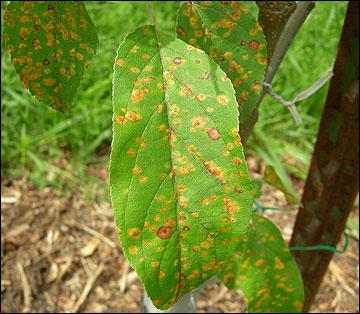
Early on, look for white, slightly raised spots on the undersides of leaves and on the stems. After a short period of time, these spots become covered with reddish-orange spore masses. Later, leaf postules may turn yellow-green and eventually black. Severe infestations will deform and yellow leaves and cause leaf drop.
Rust diseases are favored by 4 to 8 hours of low light intensity, warm temperatures and moisture — humidity, dew or rain — followed by 8 to 16 hours of high light intensity, high temperatures and slow drying of leaf surfaces.
Black spores are visible on leaves and stems in fall and overwinter inside infected stems which are distinguished by dark, corky blotches at points of infection. The spores are spread by wind or by water splashing back up onto the foliage.
Treatment
Select rust-resistant plant varieties when available.
Pick off and destroy infected leaves and frequently rake under plants to remove all fallen debris.
Water in the early morning hours — avoiding overhead sprinklers — to give plants time to dry out during the day. Drip irrigation and soaker hoses can be used to help keep leaves dry.
Use a slow-release, organic fertilizer on crops and avoid excess nitrogen. Soft, leafy, new growth is most susceptible.
Apply copper sprays or sulfur powders to prevent infection of susceptible plants. For best results, apply early or at first sign of disease. Spray all plant parts thoroughly and repeat every 7-10 days up to the day of harvest.
Effectively treat fungal diseases with SERENADE Garden. This broad spectrum bio-fungicide uses a patented strain of Bacillus subtilis and is approved for organic gardening. Best of all, it’s safe to use — you can treat and pick crops the same day!
Containing sulfur and pyrethrins, Bonide® Orchard Spray is a safe, one-hit concentrate for insect attacks and fungal problems. For best results, apply as a protective spray (2.5 oz/ gallon) early in the season. If disease, insects or wet weather are present, mix 5 oz in one gallon of water. Thoroughly spray all parts of the plant, especially new shoots.
Prune or stake plants and remove weeds to improve air circulation. Make sure to disinfect your pruning tools (one part bleach to 4 parts water) after each cut.
Use a thick layer of mulch or organic compost to cover the soil after you have raked and cleaned it well. Mulch will prevent the disease spores from splashing back up onto the leaves.
Burn or bag infected plants after the growing season (see Fall Garden Cleanup). Do NOT compost.

Early on, look for white, slightly raised spots on the undersides of leaves and on the stems. After a short period of time, these spots become covered with reddish-orange spore masses. Later, leaf postules may turn yellow-green and eventually black. Severe infestations will deform and yellow leaves and cause leaf drop.
Rust diseases are favored by 4 to 8 hours of low light intensity, warm temperatures and moisture — humidity, dew or rain — followed by 8 to 16 hours of high light intensity, high temperatures and slow drying of leaf surfaces.

Black spores are visible on leaves and stems in fall and overwinter inside infected stems which are distinguished by dark, corky blotches at points of infection. The spores are spread by wind or by water splashing back up onto the foliage.
Treatment
Select rust-resistant plant varieties when available.
Pick off and destroy infected leaves and frequently rake under plants to remove all fallen debris.
Water in the early morning hours — avoiding overhead sprinklers — to give plants time to dry out during the day. Drip irrigation and soaker hoses can be used to help keep leaves dry.

Use a slow-release, organic fertilizer on crops and avoid excess nitrogen. Soft, leafy, new growth is most susceptible.
Apply copper sprays or sulfur powders to prevent infection of susceptible plants. For best results, apply early or at first sign of disease. Spray all plant parts thoroughly and repeat every 7-10 days up to the day of harvest.
Effectively treat fungal diseases with SERENADE Garden. This broad spectrum bio-fungicide uses a patented strain of Bacillus subtilis and is approved for organic gardening. Best of all, it’s safe to use — you can treat and pick crops the same day!
Containing sulfur and pyrethrins, Bonide® Orchard Spray is a safe, one-hit concentrate for insect attacks and fungal problems. For best results, apply as a protective spray (2.5 oz/ gallon) early in the season. If disease, insects or wet weather are present, mix 5 oz in one gallon of water. Thoroughly spray all parts of the plant, especially new shoots.

Prune or stake plants and remove weeds to improve air circulation. Make sure to disinfect your pruning tools (one part bleach to 4 parts water) after each cut.
Use a thick layer of mulch or organic compost to cover the soil after you have raked and cleaned it well. Mulch will prevent the disease spores from splashing back up onto the leaves.
Burn or bag infected plants after the growing season (see Fall Garden Cleanup). Do NOT compost.
0
0















